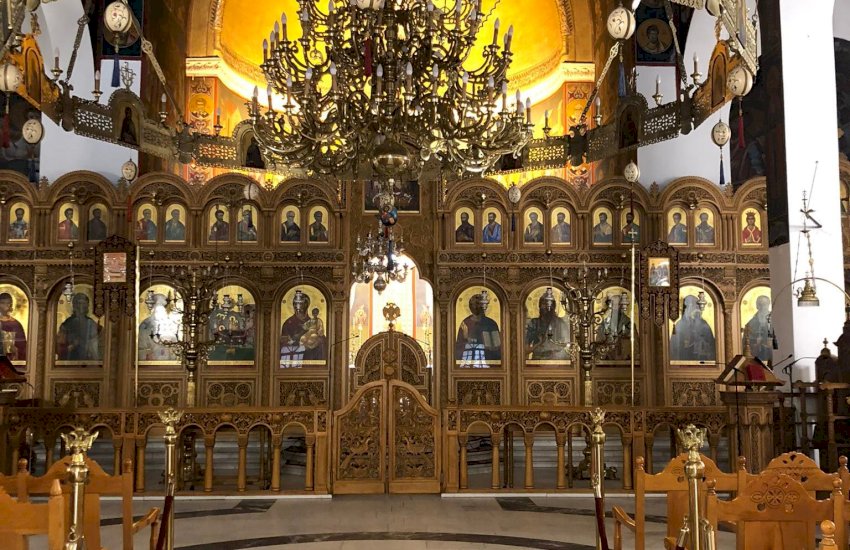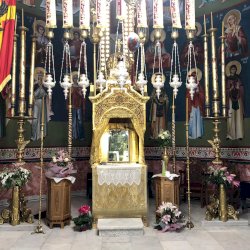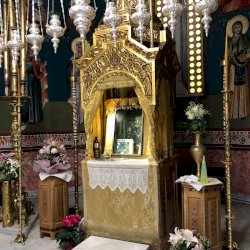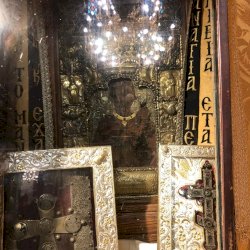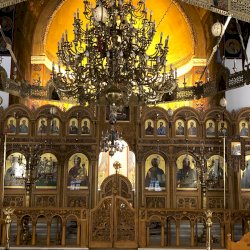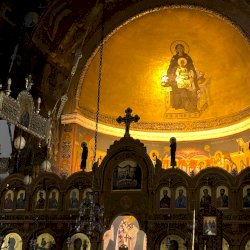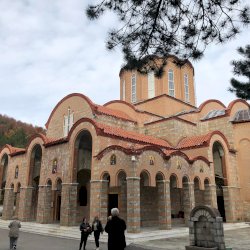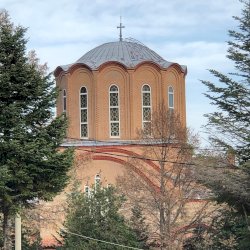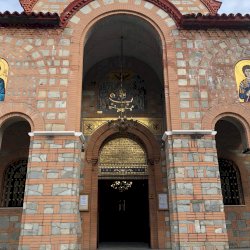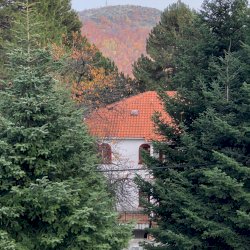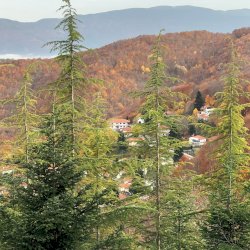The History of Panagia Soumela Icon and Monastery
The History of Panagia Soumela Icon and Monastery
The miraculous icon of Panagia Sumela along with two more Virgin Mary icons are considered the work of Evangelist Luke made around the 1st century AD. These icons are today found in the Monastery of Kykkos in Cyprus, in the Monastery of the Great Cave in Kalavryta and in the Virgin Mary Monastery in Veria.
According to tradition after the death of the Evangelist Luke, the Panagia Soumela icon was brought to Athens and was first called “Panagia Athiniotissa”. There are no sources on how the icon was transferred to Pontos. The Virgin Mary appeared and gave instructions to Barnabas and Sophronio monks where to find the icon and to build a church.
The monastery, located on Mount Mela, near Trabzon (Τραπεζούντα), was founded around 386 AD during the reign of it functioned and was favoured by the Byzantine emperors, acquiring wealth and privileges, which were maintained even after the fall of the Byzantine Empire. In 1682 and for the following decades, the monastery housed the Phrontestirion of Trapezous, a well-known Greek education institution for religion. Until the Russian occupation of Trabzon (1916-1918), the monastery was active and was visited by Christian and Muslim pilgrimages. More importantly, it had a symbolic value for the Pontians for almost sixteen centuries.
In 1923, the monastery was abandoned and the icon along with two monastery religious relics were buried by the monks in the ruins of Saint Barbara chapel, 10 km away from the monastery, for protection and to avoid their destruction.
The other relics were
A Holy Gospel parchment manuscript written around 690 AD by Saint Christopher, the third founder of the monastery, which was unfortunately not in good condition (being buried in the soil).
A Holy Cross, a gift, offered to the monastery in 1390 by the Byzantine emperor Manuel III the Great.
In 1930, the wooden parts of the Monastery were destroyed by fire and in the following years other parts of the monastery were damaged and pillaged by treasure hunters.
In 1931 the icon and the holy relics were transferred to Greece after the mediation of Eleftherios Venizelos and the contribution of monks who knew where they were kept. Upon their arrival, the Minister of Welfare, Leonidas Iasonidis, characteristically stated:
"In Greece, there were the Pontians, but there was no Pontos. Pontos also came with the icon of Panagia Sumela".
On November 10, 1931, the Holy icon, was exposed for the first time in Athens for pilgrimage.
The final say on how to manage and keep the image and other relics belonged to the Ecumenical Patriarchate. The then Primate of the Orthodox Church (Patriarch Photios II) instructed the Metropolitan of Trabzon to deliver the relics to the Byzantine Museum of Athens, where dozens of ecclesiastical relics arriving from churches and monasteries of Pontos and Asia minor were received and kept.
The Holy icon of Panagia Soumela, together with the other relics, were kept in the Athens Byzantine Museum from 1931 until 1951.
The Pontian journalist, playwright and doctor Philon Ktenidis born in Trabzon in an effort to revive the historic Trabzon Panagia Soumela monastery, a symbol of Pontic Hellenism, founded the “Panagia Soumela Association” and the Monastery.
A rocky place was sought, to match that of Trabzon, and was found in Vermio, the village of Kastania (20 km from Vermio), one of the most mountainous villages of Imathia region. In 1951 the land was granted by the local community of Kastania, who came from Pontos, and in 1952, the inauguration took place. The monastery was built with a stone-built church of relatively smaller dimensions. In August 1952 the icon of Panagia Soumela was solemnly enthroned in the church and the monastery was dedicated to the Dormition of the Virgin Mary celebrated on August 15. In August 1993, the Holly Cross and the St Christopher Holy Gospel were also delivered from the Byzantine Museum of Athens to the monastery.
The monastery architectural complex today includes two churches, guesthouses, facilities for visitors and pilgrims, a library and a museum of valuable icons, vestments and church vessels.
As a symbol of Pontian Hellenism the Monastery receives thousands of Pontians and non-Pontians who flock to worship Her grace from all over the world throughout the year, especially on August 15 to honour the Dormition of the Virgin and watch the Pontian cultural events.

